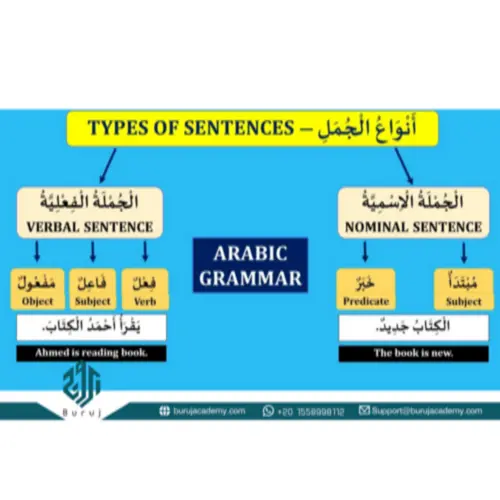Mastering Arabic Sentence Structure: A Beginner’s Guide
Once you have a firm grasp of the Arabic alphabet and the basics of nouns, the next exciting step in your language journey is learning how to put it all together. This is where you learn Arabic sentence Structure, express actions, and truly begin to communicate. This guide will focus on the dynamic elements of the Arabic language: verbs, pronouns, and sentence structure.
For beginners, understanding how these components work together is the key to moving from passive knowledge to active use. We will explore the logical root system of Arabic verbs, the different types of sentences, and the essential building blocks like pronouns and prepositions. We will also cover common mistakes that new learners make and how to avoid them, helping you build a solid foundation for eventual fluency.
Verbs: The Heart of the Arabic Sentence
Arabic verbs are the dynamic core of the language. They are typically derived from a root system of three consonants, which carries the basic meaning of the verb. This logical system allows you to build a vast vocabulary from a single root. For example, the root k-t-b (ك-ت-ب) is related to the concept of “writing.” From this one root, we can derive:
- kataba (كَتَبَ): “he wrote”
- kaatib (كَاتِب): “writer”
- maktaba (مَكْتَبَة): “library” or “office”
Tenses and Conjugation needed for Arabic Sentence Structure
Arabic verbs have two main tenses that beginners should focus on:
- The Perfect Tense (الْمَاضِي): This tense is used for actions that were completed in the past. It is the simplest form to conjugate. To change the subject, you typically add suffixes to the base form of the verb.
- kataba (he wrote)
- katabtu (I wrote)
- katabat (she wrote)
- The Imperfect Tense (الْمُضَارِع): This tense is used for actions happening now (present tense) or actions that will happen in the future. It is formed by adding both a prefix and a suffix to the verb’s root.
- yaktubu (he writes)
- aktubu (I write)
- taktubu (she writes)
Understanding these conjugation patterns is essential for forming sentences correctly.
Book Your Spot Now
The Two Types of Arabic Sentence Structure
Arabic sentence structure can be quite different from English. There are two primary types of sentences:
- Nominal Sentences (الجملة الاسمية): These are sentences that start with a noun or a pronoun. They often consist of a subject and a predicate but do not require a verb like “is” or “are.”
- Example: السماءُ صافيةٌ (al-samāʾu ṣāfiatun) – “The sky is clear.”
- Verbal Sentences (الجملة الفعلية): These are sentences that start with a verb, followed by the subject and sometimes an object. This Verb-Subject-Object (VSO) order is very common.
- Example: يكتبُ الطالبُ الدرسَ (yaktubu al-ṭālibu al-darsa) – “The student writes the lesson.”
Nominal sentences are perfect for descriptions, while verbal sentences are used to describe actions.
Essential Building Blocks: Pronouns, Prepositions, and Adjectives
To create rich and detailed sentences, you need to master these key elements.
Pronouns (الضمائر)
In Arabic, pronouns are essential for avoiding repetition. They vary by person (1st, 2nd, 3rd), number (singular, dual, plural), and gender. There are two main types you must know.
Detached Pronouns
These pronouns stand alone and usually function as the subject of a nominal sentence.
| Person | Singular | Dual | Plural |
| 1st | أنا (ana) – I | نحن (naḥnu) – We | نحن (naḥnu) – We |
| 2nd (Masc.) | أنتَ (anta) – You | أنتما (antumā) – You (two) | أنتم (antum) – You |
| 2nd (Fem.) | أنتِ (anti) – You | أنتما (antumā) – You (two) | أنتنَّ (antunna) – You |
| 3rd (Masc.) | هو (huwa) – He | هما (humā) – They (two) | هم (hum) – They |
| 3rd (Fem.) | هي (hiya) – She | هما (humā) – They (two) | هنَّ (hunna) – They |
- Example Sentence: هو طالب. (Huwa ṭālib.) – He is a student.
- Example Sentence: أنا من مصر. (Anā min Miṣr.) – I am from Egypt.
Attached Pronouns
These are suffixes that attach to nouns, verbs, and prepositions to show possession or the object of an action.
- Attached to Nouns (Possession):
- كتاب (kitāb) – a book
- كتابي (kitābī) – my book
- كتابكَ (kitābuka) – your (masc.) book
- كتابهُ (kitābuhu) – his book
- كتابها (kitābuhā) – her book
- Attached to Verbs (Object):
- رأيتُ (raʾaytu) – I saw
- رأيتهُ (raʾaytuhu) – I saw him.
- رأيتها (raʾaytuhā) – I saw her.
- يساعدُنا (yusāʿidunā) – He helps us.
Prepositions (حروف الجر)
Prepositions are crucial for showing relationships between words, such as location, direction, and time. A key grammatical rule is that the noun immediately following a preposition is always in the genitive case (مجرور – majrūr), which is typically marked with a kasra (i).
Here are some of the most common Arabic prepositions with examples:
- فِي (fī) – in, at
- الطالبُ في الفصلِ. (Al-ṭālibu fī al-faṣli.) – The student is in the classroom.
- مِنْ (min) – from
- هو من كندا. (Huwa min Kanada.) – He is from Canada.
- إِلَى (ilā) – to
- أذهبُ إلى السوقِ. (Adhhabu ilā al-sūqi.) – I am going to the market.
- عَلَى (ʿalā) – on, upon
- الكتابُ على الطاولةِ. (Al-kitābu ʿalā al-ṭāwilati.) – The book is on the table.
- بِـ (bi-) – with, by, at
- أكتبُ بِالقلمِ. (Aktubu bil-qalami.) – I write with the pen.
- لِـ (li-) – for, to
- هذا مفتاحٌ لِلبابِ. (Hādhā miftāḥun lil-bābi.) – This is a key for the door.
Adjectives (الصفات)
Adjectives are used to describe nouns. In Arabic, they are very precise and must agree with the noun they modify in four aspects: gender, number, definiteness, and case. This rule is fundamental to correct sentence structure. An adjective almost always comes after the noun it describes.
Let’s see how the adjective “big” (كبير – kabīr) changes to agree with different nouns:
- 1. Gender Agreement:
- Masculine: بيتٌ كبيرٌ (baytun kabīrun) – a big house (house is masc.)
- Feminine: سيارةٌ كبيرةٌ (sayyāratun kabīratun) – a big car (car is fem.)
- 2. Number Agreement:
- Singular: ولدٌ طويلٌ (waladun ṭawīlun) – a tall boy
- Plural: أولادٌ طوالٌ (awlādun ṭiwālun) – tall boys (uses a broken plural)
- 3. Definiteness Agreement:
- Indefinite (a…): بيتٌ كبيرٌ (baytun kabīrun) – a big house
- Definite (the…): البيتُ الكبيرُ (al-baytu al-kabīru) – the big house (Notice both the noun and the adjective take “al-“)
- 4. Case Agreement:
- Nominative (Subject): البيتُ الكبيرُ جميلٌ. (Al-baytu al-kabīru jamīlun.) – The big house is beautiful.
- Accusative (Object): رأيتُ البيتَ الكبيرَ. (Raʾaytu al-bayta al-kabīra.) – I saw the big house.
Sign Up for More Details
Common Arabic Grammar Errors Made by Beginners
Learning Arabic grammar can be challenging. Here are some common errors to avoid.
- Placing Verbs After Nouns: In verbal sentences, the verb should come first. Beginners often default to the English Subject-Verb-Object order.
- Faulty Pronunciation: It is crucial to pay close attention to the unique sounds of Arabic, like the “qaf.” Incorrect pronunciation can change the meaning of a word.
- Ignoring Gender and Number Agreement: Remember that adjectives and verbs must always agree with the noun’s gender and number. This is a common point of confusion for new learners.
Connect with Our Community (Arabic Grammar For Beginners)
High-value education extends beyond the classroom. We provide free resources and a supportive community to help you on your journey. For free tips, student stories, and academy updates, follow us on Facebook, watch our educational lessons on YouTube, and join the conversation on Instagram.
Summary and Tips for Arabic Sentence Structure Beginners
Arabic grammar may seem complex, but with systematic study, it becomes very manageable.
- Start by practicing reading and writing daily.
- Understand the core difference between nominal and verbal sentences.
- Memorize basic verb conjugations in the past and present tense.
- Practice forming simple sentences and gradually add adjectives and prepositions.
- Listen to native Arabic speakers as much as possible to internalize the sentence flow.
Above all, patience and consistent practice are key. Grammar rules start to make sense when you pair them with real-world examples. For expert guidance on this journey, explore the personalized lessons offered by our expert native tutors at Buruj Academy. Or, if you are ready to take the next step, check out our full range of Arabic courses online. Keep practicing, and enjoy the journey into this beautiful language!
Bitta’fiiq! (بِالتَّوْفِيق! “Good luck!”)





